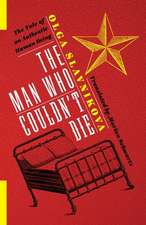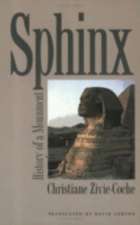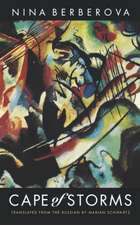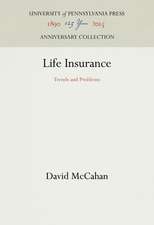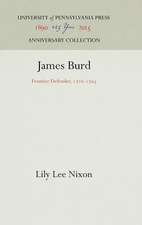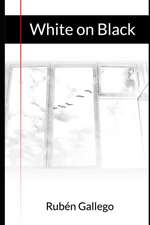March 1917 – The Red Wheel, Node III, Book 1: The Center for Ethics and Culture Solzhenitsyn Series
Autor Aleksandr Solzhenitsyn, Marian Schwartzen Limba Engleză Paperback – 30 sep 2020
The Red Wheel is Solzhenitsyn's magnum opus about the Russian Revolution. Solzhenitsyn tells this story in the form of a meticulously researched historical novel, supplemented by newspaper headlines of the day, fragments of street action, cinematic screenplay, and historical overview. The first two nodes--August 1914 and November 1916--focus on Russia's crises and recovery, on revolutionary terrorism and its suppression, on the missed opportunity of Pyotr Stolypin's reforms, and how the surge of patriotism in August 1914 soured as Russia bled in World War I.
March 1917--the third node--tells the story of the Russian Revolution itself, during which not only does the Imperial government melt in the face of the mob, but the leaders of the opposition prove utterly incapable of controlling the course of events. The action of book 1 (of four) of March 1917 is set during March 8-12. The absorbing narrative tells the stories of more than fifty characters during the days when the Russian Empire begins to crumble. Bread riots in the capital, Petrograd, go unchecked at first, and the police are beaten and killed by mobs. Efforts to put down the violence using the army trigger a mutiny in the numerous reserve regiments housed in the city, who kill their officers and rampage. The anti-Tsarist bourgeois opposition, horrified by the violence, scrambles to declare that it is provisionally taking power, while socialists immediately create a Soviet alternative to undermine it. Meanwhile, Emperor Nikolai II is away at military headquarters and his wife Aleksandra is isolated outside Petrograd, caring for their sick children. Suddenly, the viability of the Russian state itself is called into question.
The Red Wheel has been compared to Tolstoy's War and Peace, for each work aims to narrate the story of an era in a way that elevates its universal significance. In much the same way as Homer's Iliad became the representative account of the Greek world and therefore the basis for Greek civilization, these historical epics perform a parallel role for our modern world.
| Toate formatele și edițiile | Preț | Express |
|---|---|---|
| Paperback (1) | 176.75 lei 3-5 săpt. | |
| MR – University of Notre Dame Press – 30 sep 2020 | 176.75 lei 3-5 săpt. | |
| Hardback (1) | 251.20 lei 3-5 săpt. | +168.31 lei 4-10 zile |
| MR – University of Notre Dame Press – 29 noi 2017 | 251.20 lei 3-5 săpt. | +168.31 lei 4-10 zile |
Preț: 176.75 lei
Nou
Puncte Express: 265
Preț estimativ în valută:
33.83€ • 35.18$ • 27.92£
33.83€ • 35.18$ • 27.92£
Carte disponibilă
Livrare economică 24 martie-07 aprilie
Preluare comenzi: 021 569.72.76
Specificații
ISBN-13: 9780268102661
ISBN-10: 026810266X
Pagini: 688
Ilustrații: 2 Maps
Dimensiuni: 146 x 227 x 37 mm
Greutate: 0.86 kg
Editura: MR – University of Notre Dame Press
Seria The Center for Ethics and Culture Solzhenitsyn Series
ISBN-10: 026810266X
Pagini: 688
Ilustrații: 2 Maps
Dimensiuni: 146 x 227 x 37 mm
Greutate: 0.86 kg
Editura: MR – University of Notre Dame Press
Seria The Center for Ethics and Culture Solzhenitsyn Series
Notă biografică
Recenzii
"As the great Solzhenitsyn scholar Georges Nivat has written, Solzhenitsyn is the author of two great 'literary cathedrals,' The Gulag Archipelago and The Red Wheel. The first is the definitive exposé of ideological despotism and all of its murderous works. The Red Wheel is the definitive account of how the forces of revolutionary nihilism came to triumph in the first place. It is a sprawling and fascinating mix of philosophical and moral discernment, literary inventiveness, and historical insight that sometimes strains the novelistic form, but is also one of the great works of moral and political instruction of the twentieth century." —Daniel J. Mahoney, co-editor of The Solzhenitsyn Reader: New and Essential Writings
"The Red Wheel, Aleksandr Solzhenitsyn’s epic of World War I and the Russian revolution, belongs to the Russian tradition of vast, densely plotted novels of love and war set during a time of social upheaval. An extended act of author-to-nation communication, this multivolume saga poses the question, 'Where did we go wrong?' and answers it in human and political terms, but with a mystical twist that is unlike anything else in Solzhenitsyn. This translation beautifully conveys the distinctive flavor of Solzhenitsyn’s prose, with its preternatural concreteness of description, moments of surreal estrangement, and meticulous detailing of the nuances of human relationships in the shadow of encroaching chaos. The novel’s reliable, unreliable, and even mendacious character voices, its streams-of-consciousness, and its experimental flourishes possess the same vividness and freshness as they do in Russian. Think Anna Karenina and Doctor Zhivago, with Dostoevsky’s Demons thrown in for good measure." —Richard Tempest, University of Illinois at Urbana-Champaign
"There is no doubt that The Red Wheel is one of the masterpieces of world literature, made all the more precious by its relevance to the tragic era through which contemporary history has passed. Moreover, the impulse of revolutionary and apocalyptic violence associated with the age of ideology has still not ebbed. We remain confronted by the fragility of historical existence, in which it is possible for whole societies to choose death rather than life. To have the University of Notre Dame Press become the publisher of the greatest historical-literary analysis of the revolutionary upheaval is a signal development." —David Walsh, Catholic University of America
"In his ambitious multivolume work The Red Wheel (Krasnoe Koleso), Solzhenitsyn strove to give a partly historical and partly literary picture of the revolutionary year 1917. Several of these volumes have been translated into English, but the present volume appears in English for the first time. The translation is very well done and ought to give the reader a better understanding of the highly complex events that shook Russia exactly a century ago." —Richard Pipes, emeritus, Harvard University
“'Many readers know that Solzhenitsyn was unjustly imprisoned by the communist regime and wrote about the camps, which are the result of the [Russian] revolution, but few know that Solzhenitsyn in fact dedicated his life to studying the revolution itself, and its causes,' said Stephan Solzhenitsyn. 'You might say that he caught the last train of departing memory. He was able to interview some of the last living participants of those fateful days in 1917, and of the Russian civil war that followed.'" —The Guardian
"Histories tend to collapse events into a single narrative; Solzhenitsyn insists on plurality. He explodes the Russian Revolution back into myriad voices and parts, disarrayed and chaotic, detailed and tumultuous. . . the book is as immersive as binge-worthy television, no little thanks to this excellent translation that renders its prose as masterful in English as it was in Russian. In March 1917, Solzhenitsyn attempts the impossible and succeeds, evoking a fully formed world through episodic narratives that insist on the prosaic integrity of every life, from tsars to peasants. What emerges is a rich history that’s truly greater than the sum of its parts." —Foreword Reviews
"March 1917, node III, gives a sketch of the events in St. Petersburg that culminated in the overthrow of the Tsar. Most striking in this segment is the ineptitude of Russia’s ruling class. Although a decent man, Tsar Nicholas was slow to make decisions, fearful of talented people, and incapable of resolving difficult issues. The ministers who exercised executive power were appointed by the Tsar and therefore lacked energy or ability. . . . Solzhenitsyn’s art allows readers to grasp one of the pivotal episodes in history." —James Pontuso, Victims of Communism Memorial Foundation Blog
"The latest Solzhenitsyn book to appear in English, March 1917, focuses on the great turning point of Russian, indeed world, history: the Russian Revolution. . . . Almost moment by moment, we follow historical and fictional characters from March 8 to March 11, 1917, as chaos unfolds. Although the Kadets think that history must fulfill a story known in advance, Solzhenitsyn shows us a mass of discrepant incidents that fit no coherent narrative." —The New Criterion
"The Red Wheel and The Gulag Archipelago have been called Solzhenitsyn’s two 'cathedrals.' You cannot fully understand the horrors of communism and the history of the 20th century without reading them." —New York Journal of Books
"[I]n the volume translated by Marian Schwartz, March 1917: The Red Wheel, Node III, Book I, the wheel turns. The Russian Revolution begins, and the chapters become shorter, the rhythm no longer adagio but staccato. Solzhenitsyn doesn’t much care about the literary modernism of Western Europe, but he does imitate the kinetic pace of 20th century cinema. . . . In The Red Wheel, Aleksandr Solzhenitsyn produced a masterpiece, and proved himself a worthy companion of Dostoevsky and rival of Tolstoy." —Law and Liberty
"The February revolution, in Solzhenitsyn’s considered judgment, was a disaster of the first order and not a welcome, democratic eruption in a country ill-prepared for democracy. A reader of March 1917 (Node III of The Red Wheel . . .) would be hard put to quarrel with Solzhenitsyn’s judgment. As this great work of history and literature attests, February indeed was the root of all the evils to come and not a brief shining display of Russian democracy. . . . This action-packed account, beautifully translated by Marian Schwartz, tells the story of one moment in which the failure of good men to act made all the difference in the world." —National Review
"The Red Wheel and The Gulag Archipelago have been called Solzhenitsyn’s two 'cathedrals.' You cannot fully understand the horrors of communism and the history of the 20th century without reading them." —New York Journal of Books
"[I]n the volume translated by Marian Schwartz, March 1917: The Red Wheel, Node III, Book I, the wheel turns. The Russian Revolution begins, and the chapters become shorter, the rhythm no longer adagio but staccato. Solzhenitsyn doesn’t much care about the literary modernism of Western Europe, but he does imitate the kinetic pace of 20th century cinema. . . . In The Red Wheel, Aleksandr Solzhenitsyn produced a masterpiece, and proved himself a worthy companion of Dostoevsky and rival of Tolstoy." —Law and Liberty
"The February revolution, in Solzhenitsyn’s considered judgment, was a disaster of the first order and not a welcome, democratic eruption in a country ill-prepared for democracy. A reader of March 1917 (Node III of The Red Wheel . . .) would be hard put to quarrel with Solzhenitsyn’s judgment. As this great work of history and literature attests, February indeed was the root of all the evils to come and not a brief shining display of Russian democracy. . . . This action-packed account, beautifully translated by Marian Schwartz, tells the story of one moment in which the failure of good men to act made all the difference in the world." —National Review










